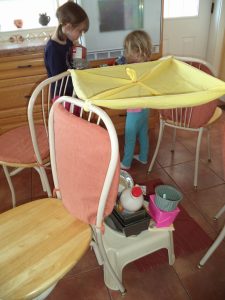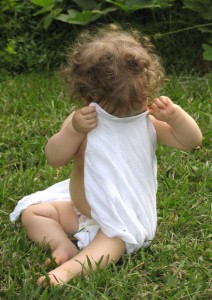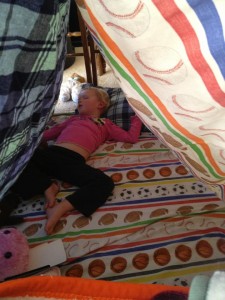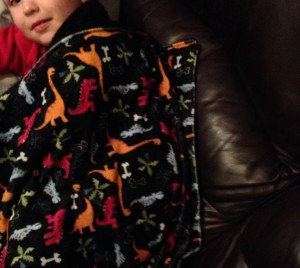Although a blanket and a few cushions aren’t typical materials for messy play, this blanket fort messy play certainly made a lot of disorder at our house.
While doing some vacuuming to clean up one mess, we had to move some of the chairs in the kitchen. I don’t know how that inspired the idea of a blanket fort, but soon the cushions were on the floor, the coffee table moved to a new position, and a few blankets recruited from other rooms. Once the blanket fort had a roof and walls, the kids began rounding up all the things needed for playing in it. This added up to a surprising number of items, but it was all contained in one space.
While messy play often refers to sensory fun, and creative play usually suggests art activities, making a blanket fort was both. The kids were creating their own world. They were also managing it which required a lot of problem-solving and negotiating. Figuring out how the world works and finding our place within it is a huge challenge. This can be overwhelming for young children. With a blanket fort, kids are in control of the world, even if it’s just a small space for a short time. They are controlling the rules and directing the play. This limits the uncertainty for them. On the other hand, play in a blanket fort is unlimited, because the fort can be anything such as a store, space ship, bus, or dragon cave, and kids can choose to be anyone, person, animal, or another creature.
Blanket fort messy play not only engages brains and promotes thinking skills, it also involves emotions and encourages exploring feelings. Kids can pretend they are brave or scared, adults or babies. In a variety of roles, they interact with others, connecting actions and words. This play is purposeful and perhaps that is why it’s so much fun for kids. All in all, isn’t that worth the mess?



